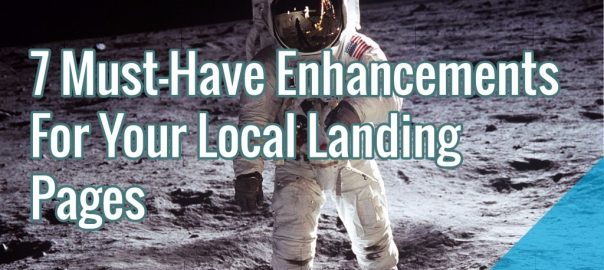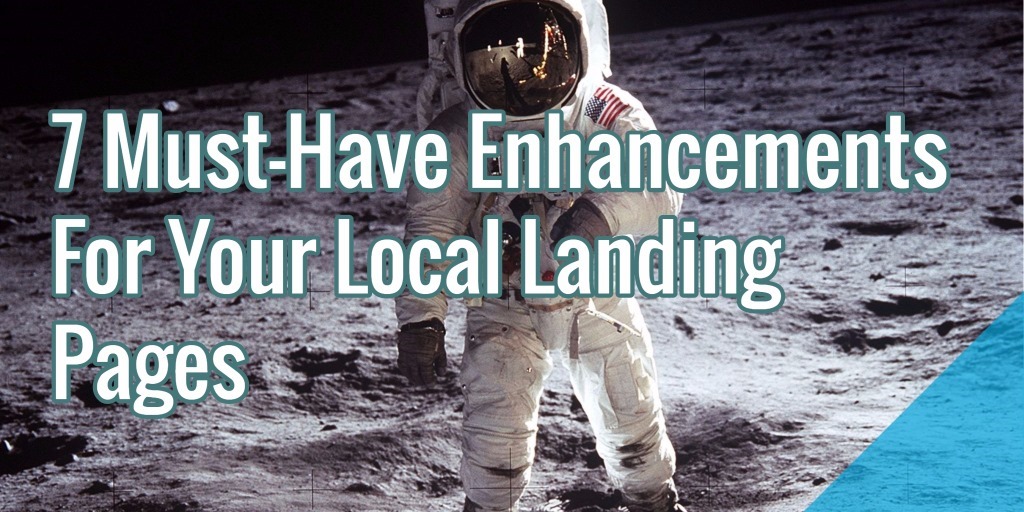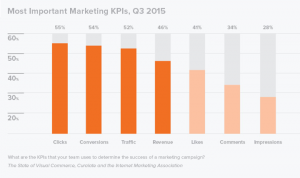Local SEO can be a touchy subject. It’s filled with pitfalls and problems, but just as many opportunities to improve if you know where to look. Keeping this in mind, let’s take a gander at some of the shifting standards in the Local SEO game, for those all-important directors of traffic and conversion: the local landing page.
1. Individual City Pages Per Service Area
To improve your landing pages results, you’ll have to make more than one landing page. Not particularly exciting news, but there it is. Of course, the lazy route through this mess is with template pages and multiple spun versions of the same tired copy. That’s not exactly the ideal, and in fact, can have a very negative effect on your SEO score. Let’s look at a slightly different approach.
Let’s say you’re in a service business that’s located in a major city. Chances are you serve a lot of different municipalities, suburbs, incorporated townships, and so on that are within a certain radius from your main office. If that’s the case, you don’t need to rank in a single area, you need to rank in multiple areas.
If your service areas are too numerous to practically create enough pages all at once, then you’ll need to prioritize your highest volume areas. And pay attention now, because this part is important: link to your landing pages under a top level menu heading. It’s vital that these landing pages be a part of your browsable hierarchy. If they aren’t, they might be labeled by Google as doorway pages. Google has been targeting these more ruthlessly, and its important to know how to avoid being dragged under that umbrella.
In a perfect world, you’d want to rank in every area you work in. That would mean creating indexed pages/content for each service area. To do this, you’ll need to follow the classic formula for your keywords: business name, city/state, service, and do so for each page. And you need to create unique and compelling copy for each as well. The problem is that you can quickly get caught in the trap of overdoing it.
Unfortunately, one way that you may be labeled as a doorway page, is by publishing too many landing pages. A multitude of pages which all say the same stuff and go to the same place are seen as manipulative and have a greater chance of being flagged.
So keep the numbers down, both for the sake of your SEO and just to keep things easier for you. It’s pretty difficult after all to make unique copy for dozens of different service areas.
Which brings me to our next tip:
2. Unique Content Only
Each of your landing pages needs to be unique enough to where you won’t be penalized. That doesn’t mean the same script with 3 or 4 different words changed per page. Nor does it mean going on Fiver and hiring a writer to spin your copy 8-10 times in order to keep costs down.
What it does mean is brand new, evocative content on each and every page you publish. Depending on how large an area you serve, this can be a daunting task. Once again, make sure you prioritize with your highest volume areas and add additional pages for lesser volume regions as time goes by without overdoing it.
If you have multiple offices, make sure to create multiple Google+ local pages as well. The Google My Business listings are extremely important to local rankings.
These steps provide you with more targeted results, higher conversions, and a more accurate representation of your user base by filtering out search queries by location.
3. Answer The Question
Your landing page has to serve a purpose. If you’re only linking to another part of your website, you’ll only encourage Google to dock your score for being a doorway page. In addition to being within the site hierarchy, completely unique, and not too numerous in number, your page also has to be useful. It needs to add value for the user.
They searched for something specific; you’d best have content on the page that gives it to them.
So it’s wise to ensure your NAP (Name, Address, and Phone number) is advertised visibly. And doubly wise to confirm your content is more than just filler asking for a subscription or a purchase. Users are asking questions with their search queries, your job is to anticipate the answer and package it in an attractive and easily consumable manner.
4. Make The Heading Match The Ad
This is a simple one, but it speaks to consistency which is a major factor in authority, design, and user trust. Users, despite being intelligent and otherwise completely ordinary people, can be mighty impatient and easily confused. If they click an ad that says one thing but then are taken to a landing page that says another, they can be put off.
Moreover its important to repeat certain information both in the ad title and the H1/H2 tags, such as city and state. This increases relevance and reinforces to users that they’ve come to the right place. Beyond even that, having similar or complimentary language throughout your landing page that matches the text in your ad can boost your AdWords score, helping you realize the true CPC of your ad.
5. To Link Or Not To Link?
Links are a bit of a double edged sword. On the one hand inbound links are extremely useful for a landing page. All traditional methods apply. Social media links are a given, a link in a blog post or in a forum signature is also good. Really any traditional method of link building (excluding spammy links, of course) that moves toward your landing page is going to be helpful.
On the other hand, however, outbound links placed on your landing page are potentially detrimental. Too many links can be distracting and discourage conversion. Link out only where necessary and keep your message focused, singular even.
Landing pages should only have one purpose and you don’t want to diffuse user attention by allowing them an easy outlet to other content unless absolutely necessary.
6. Use Schema Structured Markup
This is another given, but it’s worth mentioning. Google loves structured data. Their preferred structure is schema. Further, marking your data up with schema qualifies your content to appear in both rich results and knowledge graph cards.
Greater complexity increases the need for specific schema markup. That being the case, landing pages for a multi-location business with even more service areas can definitely benefit from a solid structure.
7. Location Specific Content
You can use testimonials on your landing pages but keep it specific to this location.
These testimonials are a possible exception to the outbound links pitfall I mentioned above. Having a testimonial that links out to a customer’s website or social profile can go a long way in proving your company’s worth. Even more so if you have a testimonial from someone with a high profile.
Don’t Forget The User Experience
If you can implement these 7 tips, you’ll be in pretty decent standing with Google and its competitors. However, what about the potential customers out there? You still need to optimize for them as well. Just because you’re searchable doesn’t mean you’re usable, after all.
For this, you need look no further than the conventional wisdom on the subject:
- Clear concise headlines with powerful supporting sub-headers
- High quality imagery related to the subject matter
- Powerful conversion optimized copy that concentrates on customer benefits without neglecting product/service features
- An attention grabbing CTA that’s clearly visible above the fold on your page.
- Clients, testimonials, case studies, reviews or any other location/business specific content included
- NAPs, maps, directions, hours of operation, etc. all included on-page
- A carefully thought out and consistent color scheme designed to capture attention and breed trust in the customer
- Perfect grammar
- Video where possible
- A willingness to change things if they aren’t working
That last bit is important because testing will always be an industry imperative when it comes to selling something with a landing page. Always look for chances to improve your pages. Test to see what works and what doesn’t. Keep the useful stuff and cut out the dross.
* Adapted lead image: Public Domain, pixabay.com via getstencil.com
7 Must-Have Enhancements For Your Local Landing Pages
The post 7 Must-Have Enhancements For Your Local Landing Pages appeared first on Search Engine People Blog.
Search Engine People Blog(100)
Report Post







